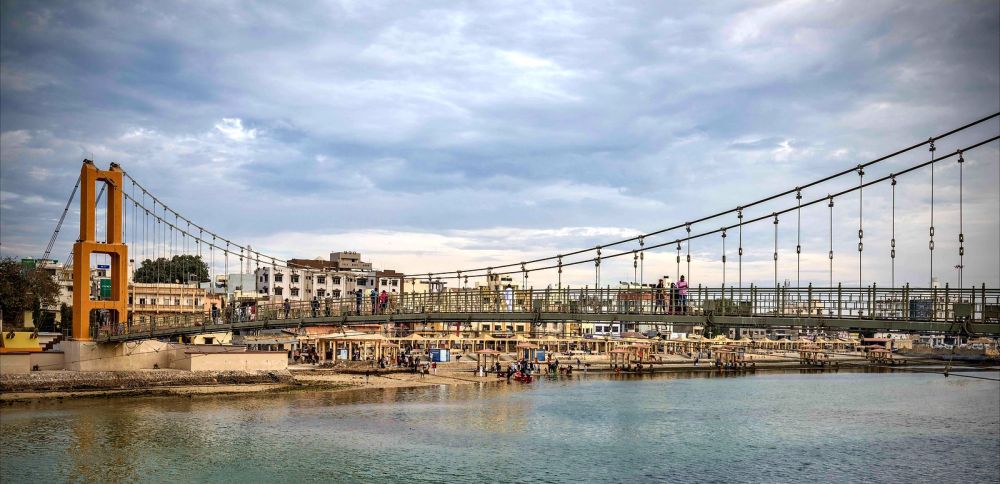

Dwarka, one of the foremost Chardham destinations and one of the seven most ancient cities in India, is steeped in myths and legends. Among its many attractions is the Sudama Setu, a suspension bridge that connects the mainland of Dwarka with the island of Panchkui Tirth. This bridge derives its name from Sudama, the childhood friend and humble devotee of Lord Krishna.
The idea of Sudama Setu pays homage to the friendship between Lord Krishna and Sudama. The bridge was built to facilitate the pilgrimage to the sacred island, which is associated with the five Pandava brothers from the epic Mahabharata. Before the construction of Sudama Setu, pilgrims had to reach the island by boat, a journey that was not always possible during harsh weather conditions. The concept for a dedicated bridge emerged from the need to provide a safer and more reliable means for devotees to complete their pilgrimages.
The construction of the Sudama Setu started in the early 21st century. The bridge was designed to blend with the natural beauty of the area and to offer panoramic views of the Dwarkadhish Temple and the Gomti River. The bridge itself is a marvel of engineering, constructed in a manner that disturbs neither the river's flow nor its aquatic life.
Since its inauguration, the Sudama Setu has become an integral part of the tourist experience in Dwarka. The bridge has not only provided a convenient passage for the pilgrims but has also spurred economic development in the region, with increased business for local vendors and shop owners. Attractions such as the sunset point near the bridge have become a draw for both tourists and locals alike.
In recent years, there has been a noticeable increase in spiritual tourism in Dwarka, with Sudama Setu playing a pivotal role. Tour operators have incorporated the bridge into their itineraries, often highlighting it as a place for both religious significance and scenic beauty.
Eco-tourism has also started to take root in the area, with visitors showing interest in the rich biodiversity present around the Gomti River and the island of Panchkui. Efforts are being made to develop sustainable tourism practices that respect the sanctity of Dwarka’s historical and religious sites while accommodating the growing interest of travelers.
For those planning to visit Sudama Setu, the bridge offers a serene walkway with stunning views, especially during sunrise and sunset. The calm yet majestic presence of the bridge complements the spiritual atmosphere of Dwarka, making it a must-visit destination for those interested in India's rich cultural tapestry.
Visitors are advised to dress respectfully and be prepared for crowds during peak pilgrimage seasons. A small fee is required to cross the bridge, which goes towards its maintenance and the preservation of the surrounding area.
In summary, Sudama Setu stands not just as a physical structure but as a testament to enduring friendship, culture, and devotion. It serves as a beacon for the growth of tourism in Dwarka, welcoming visitors from around the world to experience the combination of divine tranquility and historical grandeur.